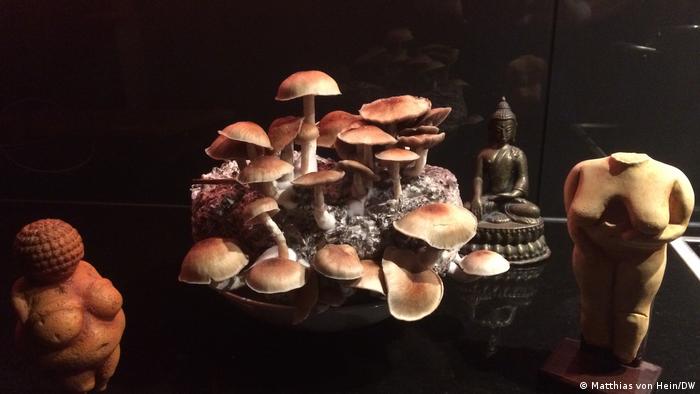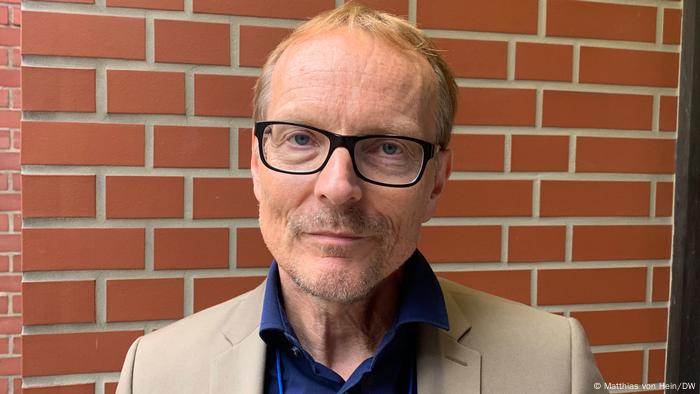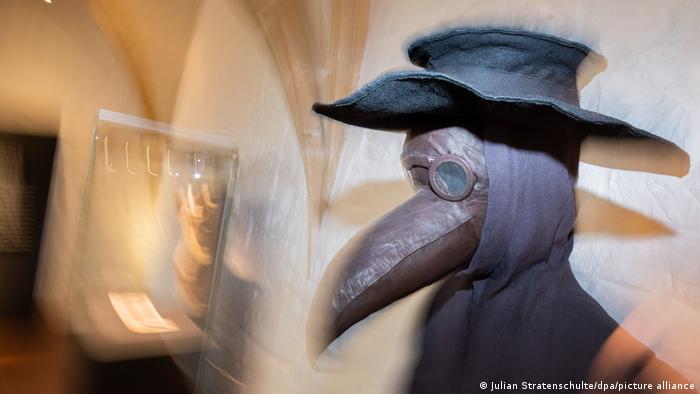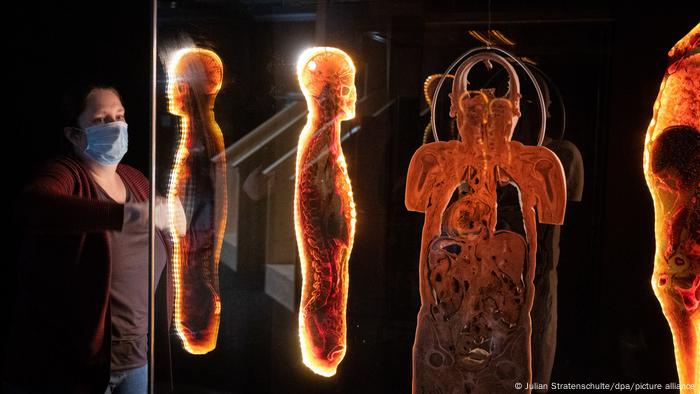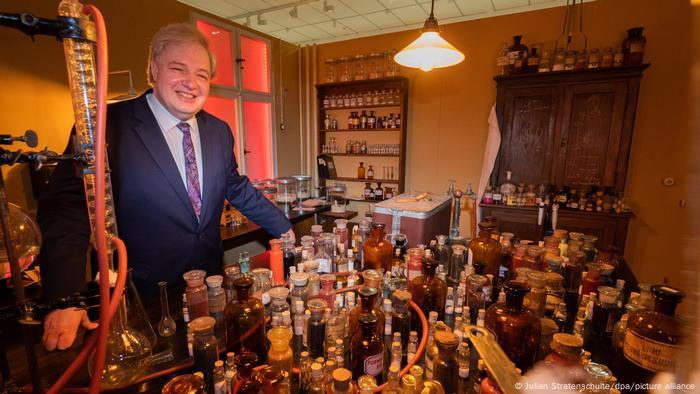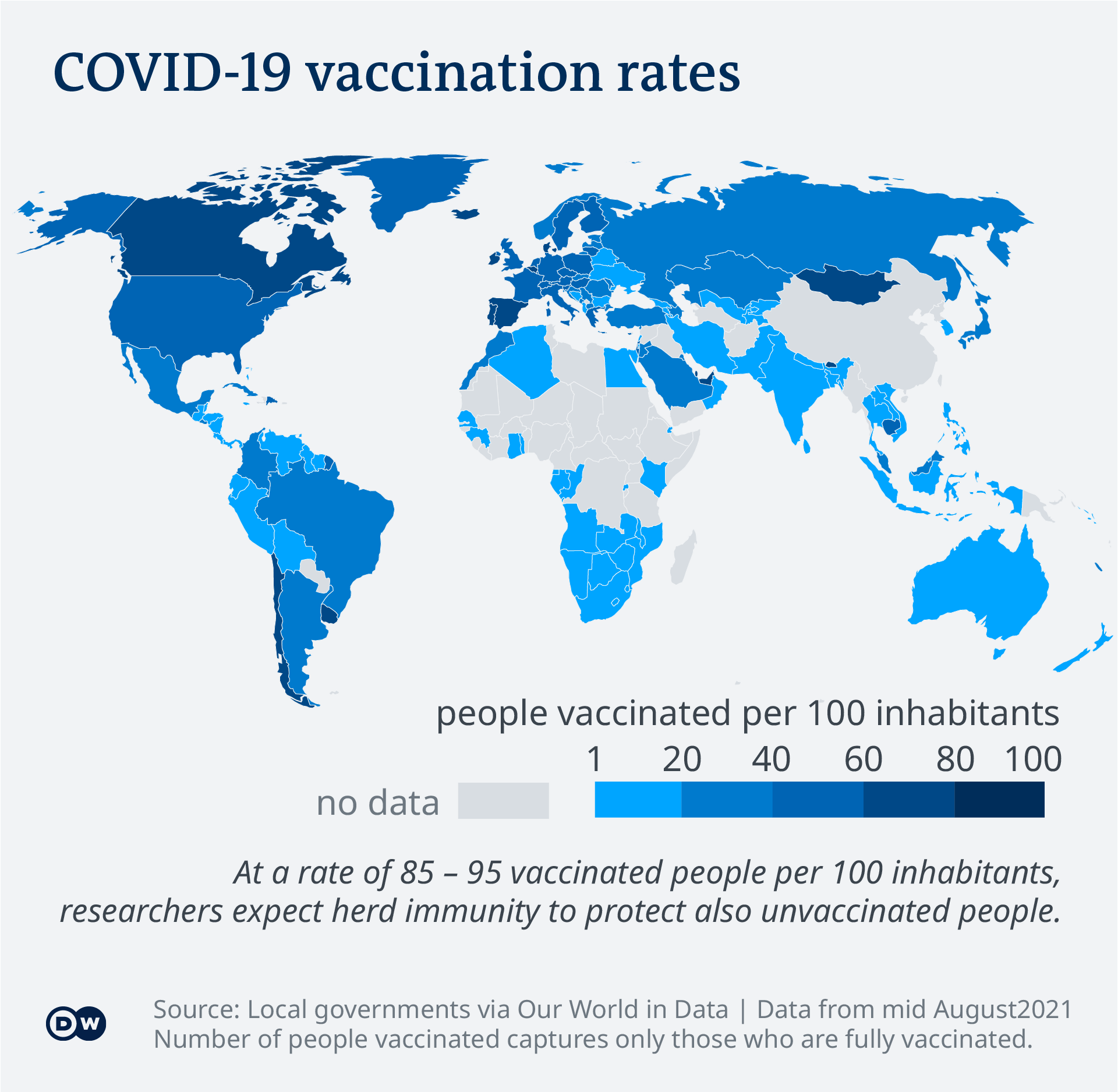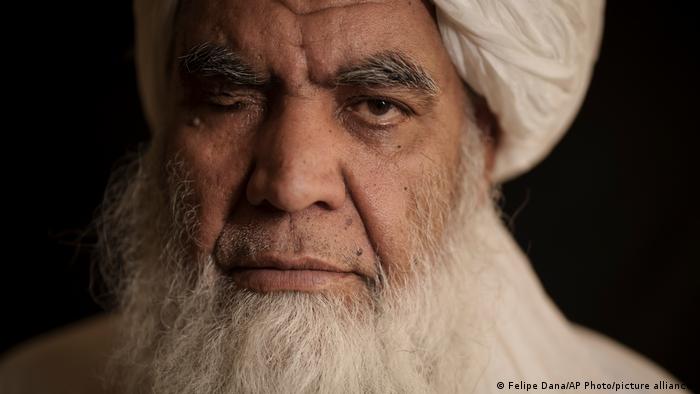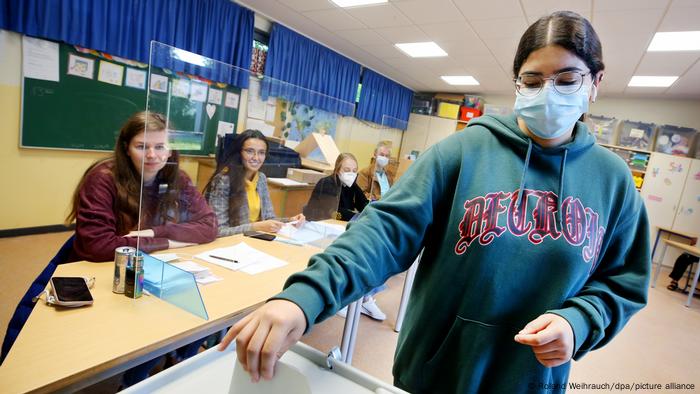Media company Ozy to shut down after report highlights potential securities fraud
Tali Arbel
Associated Press
Ozy is shutting down less than a week after a New York Times column raised questions about the media organization's claims of millions of viewers and readers, while also pointing out a potential case of securities fraud.
The story triggered canceled shows, an internal investigation, investor concern and high-level departures at the company.
An emailed statement Friday from Ozy Media's board called it a company with many “world-class journalists and experienced professionals to whom we owe tremendous gratitude.” It said it was "with the heaviest of hearts that we must announce today that we are closing Ozy’s doors.”
The board's statement did not give the reason for shutting down the company based in Mountain View, California. Ozy did not respond to questions about why it was shutting down now or how many employees it had

Ozy's CEO, former cable-news commentator and host Carlos Watson, started Ozy in 2013. It published stories on its website, made podcasts, newsletters and shows and hosted the OzyFest festival. Its website remained up on Friday afternoon.
The Times story said Ozy's chief operating officer and co-founder, Samir Rao, impersonated a YouTube executive on a call with Goldman Sachs while attempting to raise money from the investment bank. It also addressed long-held industry questions of whether Ozy was inflating its audience size.
In a tweet, Watson claimed 25 million newsletter subscribers – the New York Times, with a much bigger brand presence, says it has 15 million newsletter readers – and more than 30 million views on YouTube. The Times said fewer than 500,000 people went to Ozy's website in June and July, according to Comscore data.
On Thursday, Marc Lasry, the hedge-fund billionaire and Milwaukee Bucks co-owner who had been named Ozy's chairman in September, resigned, citing Ozy's need for someone experienced in crisis management and investigations. He remained an investor.
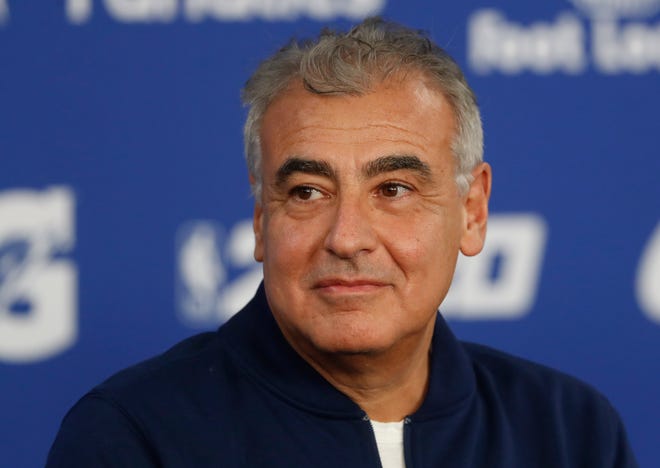
A high-profile employee, former BBC anchor Katty Kay, resigned earlier in the week, and an early investor, a venture capital firm, gave up its Ozy shares. The board had reportedly hired a law firm to review Ozy's business activities.
Cable network A&E pulled a special on mental health hosted by Watson that was scheduled for Monday night, and Watson stepped down from hosting a documentary Emmys awards show Wednesday night.
The website Crunchbase, which tracks corporate fund-raising, said Ozy had raised more than $70 million from investors as of late 2019.
PUBLISHED FRI, OCT 1 20211
Alex Sherman@SHERMAN4949
KEY POINTS
Ozy Media’s board on Friday announced that the company is shutting down.
CEO Carlos Watson informed employees of the board’s vote.
Watson had a reputation for being demanding and temperamental but also built a diverse newsroom employees respected.
VIDEO 03:40 Ozy Media shutting down
Ozy Media CEO Carlos Watson informed employees Friday that the board had voted to shut down the company, according to a person familiar with the matter.
In a five minute phone call late in the afternoon, Watson informed Ozy’s staff of the decision, said the person, who asked not to be named because the conversation was private. A dejected-sounding Watson did not take any questions, the person said.
The New York Times was first to publish news of Ozy’s decision.
“At Ozy, we have been blessed with a remarkable team of dedicated staff,” the company’s board told the Times. “Many of them are world-class journalists and experienced professionals to whom we owe tremendous gratitude and who are wonderful colleagues. It is therefore with the heaviest of hearts that we must announce today that we are closing Ozy’s doors.”
A spokesperson for Ozy wasn’t immediately available for comment. According to Axios, which also reported Ozy Media is shutting down, the company had 75 full-time employees.
Full-time staffers are now waiting to hear if they will receive any severance or extended benefits from the abrupt shutdown, the person said. Freelance writers will be paid final pay checks next week, another person said.
The Times first reported on Sunday that an Ozy executive later revealed to be COO Samir Rao, impersonated a YouTube executive on a conference call with Goldman Sachs, which was considering a $40 million investment in the company. The company had also allegedly vastly inflated its monthly unique visitors, a metric used by media companies to attract advertisers.
That report set off a tailspin at the company.
On Wednesday, former BBC anchor Katty Kay, and one of Ozy Media’s executive producers, resigned from the company amid the fallout.
On Thursday, Marc Lasry resigned as the chair of Ozy Media after just three weeks on the job. Billionaire investor Lasry is the CEO of Avenue Capital Group and owner of NBA champions the Milwaukee Bucks.
“I believe that going forward Ozy requires experience in areas like crisis management and investigations, where I do not have particular expertise,” Lasry said on Thursday. He added that he remains an investor in Ozy Media.
CNBC also reported on Thursday that Ozy Media founder Carlos Watson lied when he claimed Sharon and Ozzy Osbourne invested in his company. The Osbournes filed a trademark lawsuit in 2017 over the company’s name Ozy Fest, which is the firm’s annual concert and festival. Osbourne told CNBC Watson leveraged his connections with billionaire Ozy Media investor Laurene Powell Jobs to threaten lawsuits. “This guy is the biggest shyster I have ever seen in my life,” Osbourne said.
Ozy also promised former producers that it was filming a show for A&E, according to a report from the Times on Thursday. But producers discovered that, too, was a lie, and that A&E never had plans to air interviews Ozy had filmed, according to The New York Times.
Previous employees at Ozy told CNBC Friday that Watson ran the company as a charismatic and temperamental leader. His demands on reporters — including writing four feature-length stories a week with “flavorful” prose — led several employees to quit from burnout. CNN spoke with other employees that mentioned similar stories of long work days and exhaustion.
Both Watson and Rao gained reputations for screaming at employees in the workplace, according to five ex-employees. One said working at Ozy felt like a Wall Street trading floor and thought the pair’s time working at Goldman Sachs may have contributed to their demeanors.
Watson would frequently boast of Ozy’s reach at internal meetings, said three people who were present for them, but reporters and editors saw little evidence of Ozy’s popularity. Still, they stayed with the company because they believed in its mission: to report stories and trends that other media outlets hadn’t yet discovered. Former Ozy employees also credited Watson with building a diverse workplace and allowing them to cover outside-the-box issues.
“I’ve never seen a workplace as diverse as Ozy’s,” one ex-employee said. “That was a huge reason to stay at the company.”
But the demanding pace and Watson’s temper caused many to leave -- often to Watson’s chagrin. Several noted Watson attempted to keep them and even contacted them after they’d quit.
“There’s a real guy in there, somewhere,” one ex-employee said of Watson. “It’s just tough to cut through the vanity.”
Watson was the face of the company both literally and figuratively, the employees said. He would ask to be more prominently featured on the website, with links to his YouTube talk show, “The Carlos Watson Show,” two of the people said. A YouTube advertisement for the show cites a quote from Deadline calling Watson “The Best Interviewer on TV.” That line was actually said by Rao, the executive who impersonated the YouTube executive, in a 2020 Deadline article about “The Carlos Watson Show.”
WATCH: NYT’s Smith discusses Marc Lasry’s resignation from Ozy
Ozy Media to shut down after advertisers flee, chairman resigns and Sharon Osbourne cries foul

Ozy Media said late Friday it would shut down after big advertisers put their campaigns on hold and the digital media startup’s billionaire chairman resigned amid a slew of bizarre scandals — including surprise allegations from reality star Sharon Osbourne.
“At Ozy, we have been blessed with a remarkable team of dedicated staff. Many of them are world-class journalists and experienced professionals to whom we owe tremendous gratitude, and who are wonderful colleagues. It is therefore with the heaviest of hearts that we must announce today that we are closing Ozy’s doors,” a statement from its board said, according to the New York Times.
As of Friday evening, the site was still online. There was no immediate indication of when or how it would turn out the lights.
Ford, Airbnb, Goldman Sachs and Target are among the firms that had earlier pressed pause on their campaigns with the media company, costing Ozy as much as $5 million in revenue, The Wall Street Journal reported Friday, citing unnamed sources.
Ford confirmed the news, saying: “We are pausing our advertising while Ozy Media addresses their current business challenges.” Airbnb, Goldman Sachs and Target did not immediately return requests for comment.
Late Thursday, billionaire Marc Lasry, who is owner of the Milwaukee Bucks NBA team and CEO of the buyout firm Avenue Capital, resigned as Ozy’s chairman after just three weeks on the job.
“I believe that going forward Ozy requires experience in areas like crisis management and investigations, where I do not have particular expertise,” Lasry said. “For that reason, I have stepped down from the company’s board. I remain an investor in the company and wish it the best going forward.”
Separately Thursday, reality star Sharon Osbourne said the company’s disgraced co-founder and CEO Carlos Watson falsely claimed that she and her husband, heavy-metal legend Ozzy Osbourne, were investors in the company.

Earlier this week, a New York Times report uncovered that Ozy’s co-founder and COO Samir Rao impersonated a YouTube executive on a call with potential investor Goldman Sachs. That article and several follow-ups have also claimed that Ozy frequently inflated key business metrics to other investors and even lied to its own employees about business operations.
Since then, the FBI has reportedly begun looking into the phone call that alleged Rao pretended to be a YouTube exec in order to drum up investor dollars. Although Ozy has not publically released a statement, Watson tweeted Monday that the Times article was a “hitjob.” He hasn’t tweeted since.
The dustup with the Osbournes started in 2017 when the couple filed a trademark lawsuit over Ozy Media’s annual concert and festival, which is called Ozy Fest. For years, The Osbournes had produced the Ozzfest music festival, which featured acts such as Black Sabbath, Tool and Slayer.

“Fun fact: our friend Ozzy and Sharon sued us briefly, and then we decided to be friends and now they’re investors in Ozy,” Watson said on CNBC two years ago.
That was a flat-out lie, according to Sharon Osbourne, who spoke to CNBC on Thursday.
“This guy is the biggest shyster I have ever seen in my life,” she said, adding that Watson tried to intimidate her while the lawsuit was being filed, saying that Ozy Media has a slew of resources and could draw out the legal battle so much that the family would be saddled with exorbitant legal fees for years to come.
The two sides settled after the Osbournes shelled out $300,000 in legal fees. The settlement required that Ozy Media submit musical acts and advertisers to Osbourne for approval, so as to make sure there was no overlap.
SV Angel, an early investor in Ozy led by legendary Silicon Valley venture capitalist Ron Conway, surrendered the shares it acquired in the company in 2012, Axios reported.
Separately, veteran journalist Katty Kay, who joined Ozy in May, announced her resignation from the media company after writing on Twitter that she found the allegations to be “deeply troubling.”
Ozy’s board earlier this week announced that it hired a law firm to launch an external investigation “following reports of conduct that is not in keeping with our standards of values.” The board also said it asked Rao, the COO at the center of some of the allegations, “to take a leave of absence pending the results of the investigation.”
However, in the original Times story that sparked the flurry of activity at the media upstart darling, Lasry — then the chairman of the board — said the board was aware of the incident and supported how it was handled.
“The board was made aware of the incident, and we fully support the way it was handled,” he was quoted as saying. “The incident was an unfortunate one-time event, and Carlos and his team showed the kind of compassion we would all want if any of us faced a difficult situation in our own lives.”


